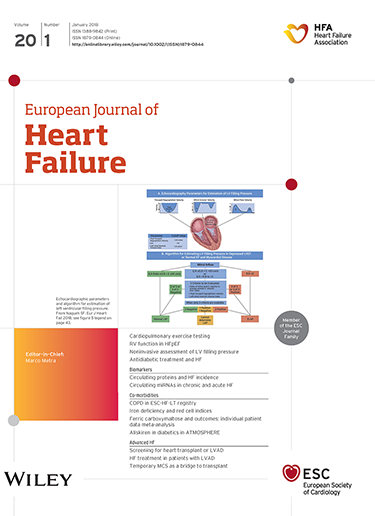Mineralocorticoid receptor antagonists (MRA) improve outcomes in heart failure with reduced ejection fraction (HFrEF) but are underused. Point prevalent use has been described, but the kinetics of discontinuation and the extent of reinitiation have not been studied.
Patients with HFrEF enrolled in the Swedish Heart Failure Registry between 2006 and 2021 were linked to the Prescribed Drug Register. The rate of discontinuation during the first year of treatment and reinitiation the year after discontinuation were estimated using the Kaplan–Meier method. Multivariable Cox proportional hazards models were used to assess the predictors of discontinuation. Of 11 474 MRA new users, 71% remained on therapy at 1 year. Baseline characteristics independently associated with discontinuation were: estimated glomerular filtration rate (eGFR) <30 ml/min/1.73 m2 (hazard ratio [HR] 1.75, 95% confidence interval [CI] 1.34–2.27), hyperkalaemia (HR 1.73, 95% CI 1.25–2.40), eGFR 30–60 ml/min/1.73 m2 (HR 1.51, 95% CI 1.37–1.66), age ≥80 years (HR 1.26, 95% CI 1.10–1.43), enrolment as inpatient (HR 1.25, 95% CI 1.14–1.38), a diagnosis of atrial fibrillation (HR 1.24, 95% CI 1.10–1.39), living alone (HR 1.23, 95% CI 1.13–1.34), ischaemic heart disease (HR 1.20, 95% CI 1.09–1.31), anaemia (HR 1.17, 95% CI 1.07–1.29), diabetes mellitus (HR 1.15, 95% CI 1.04–1.27) and New York Heart Association class III–IV (HR 1.13, 95% CI 1.02–1.24). Reinitiation within a year occurred in 46% of cases, mostly within 3 months after discontinuation.
Among patients with HFrEF initiated on MRA, 71% remained on therapy at 1 year. Discontinuation occurred early and was more common in patients with advanced kidney disease, hyperkalaemia, lack of follow-up in specialty care, more severe heart failure, comorbidities, and markers of sociodemographic frailty. Among those who discontinued, almost half reinitiated treatment the year following discontinuation.



